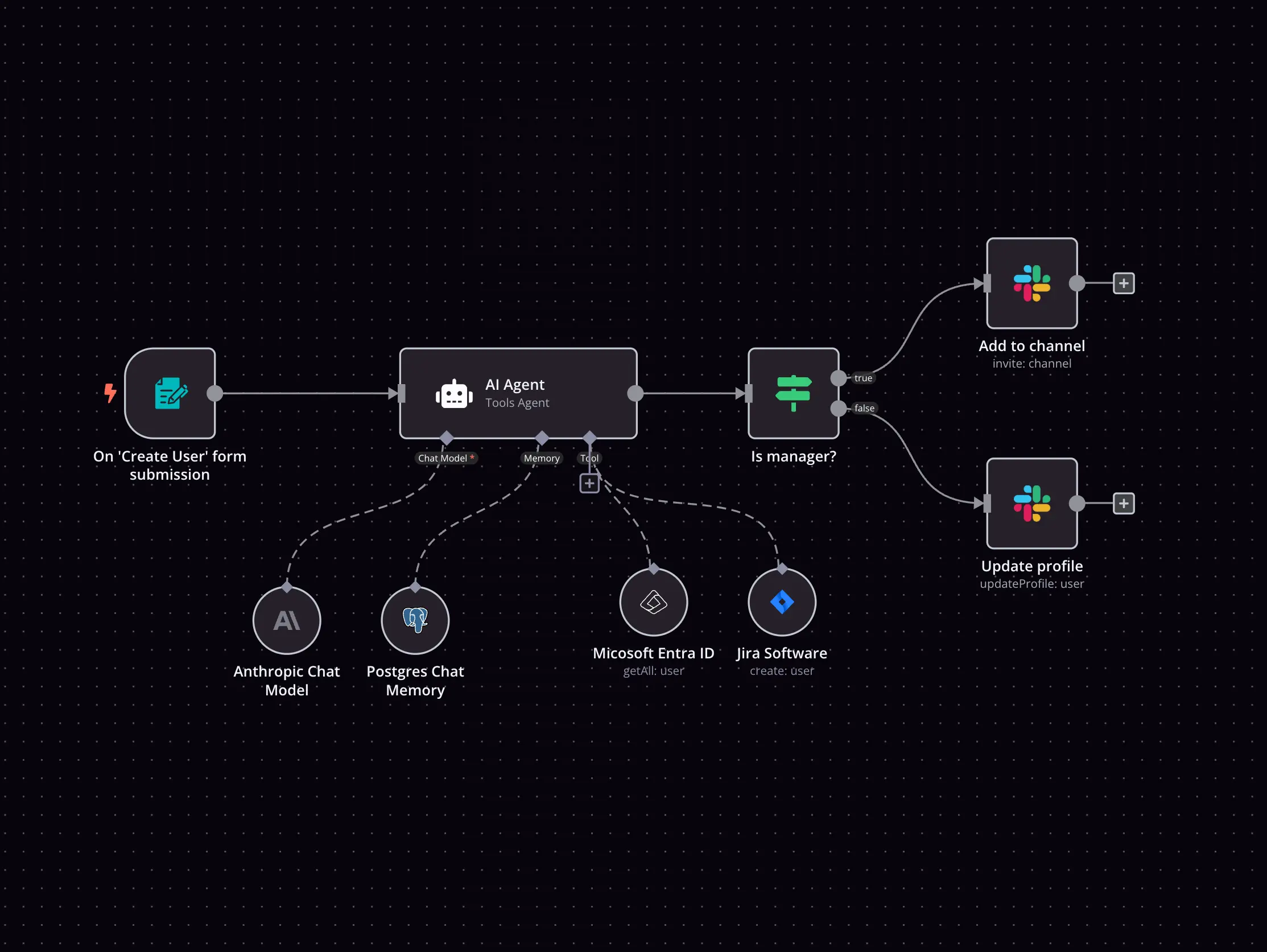Cloudinary and Envoy integration
Save yourself the work of writing custom integrations for Cloudinary and Envoy and use n8n instead. Build adaptable and scalable workflows that work with your technology stack. All within a building experience you will love.

How to connect Cloudinary and Envoy
Create a new workflow and add the first step
In n8n, click the "Add workflow" button in the Workflows tab to create a new workflow. Add the starting point – a trigger on when your workflow should run: an app event, a schedule, a webhook call, another workflow, an AI chat, or a manual trigger. Sometimes, the HTTP Request node might already serve as your starting point.
Build your own Cloudinary and Envoy integration
Create custom Cloudinary and Envoy workflows by choosing triggers and actions. Nodes come with global operations and settings, as well as app-specific parameters that can be configured. You can also use the HTTP Request node to query data from any app or service with a REST API.
What can you do with Cloudinary?
Upload From URL
Upload an asset from URL
Upload File
Upload an asset from file data
Update Asset Tags
Update tags for an existing asset
Update Asset Structured Metadata
Update structured metadata for an existing asset
Get Tags
Get all tags for a specific resource type
Get Metadata Fields
Get all metadata fields definitions
Supported API Endpoints for Envoy
Get company
Retrieve information about a specific company.
Get company details
Retrieve details about an organization or account.
Get location
Retrieve details about a specific location.
Get locations
Fetch a list of all locations.
Get location
Retrieve a specific location by ID.
Fetch employees
Retrieve a list of all employees.
Look up employee by ID
Get details about a specific employee using their ID.
Import Employees Records
Upload multiple employee records at once.
Fetch a list of Employees
Fetches a list of Employees based on the provided criteria.
Get employee by ID
Look up an Employee by ID.
List employees
Fetch a list of Employees.
Retrieve employees
Retrieves a list of employees.
Fetch flows
Retrieve a list of all flows.
Look up flow by ID
Get details about a specific flow using its ID.
Retrieve flows
Fetches a list of flows.
Fetch a list of Flows
Retrieves a paginated list of flows.
Get entry by ID
Retrieve information about a specific entry using its ID.
Fetch entries
Retrieve a list of all entries.
Create an Entry
Create a new entry in the system.
Update entry
Updates an existing entry in the system.
Create entry
Create a new entry for visitors.
Create entry
Creates a new entry.
Retrieve entries by date
Fetches entries that fall on a specific date.
Update entry
Updates an existing entry.
Retrieve an entry by id
Fetches a single entry using its ID.
Create entry
Create an Entry.
Update entry
Update an Entry.
Fetch invites
Retrieve a list of all invites.
Get invite by ID
Retrieve information about a specific invite using its ID.
Retrieve invites by date
Retrieve invites by date based on specific criteria.
Create invite
Create a new invite in the system.
Retrieve invite
Retrieve a specific invite by its ID.
Update invite
Update an existing invite with new information.
Check in invite
Check in an invite.
Update invite
Update an existing invite.
Update invite
Updates an existing invite.
Check in invite
Check in an Invite.
Delete invite
Delete an Invite.
Create invite
Create an Invite.
Look up recurring invite
Retrieve information about a specific recurring invite.
Create recurring invite
Create a RecurringInvite.
Update recurring invite
Update a Recurring Invite.
Create recurring invite
Create a Recurring Invite.
Get reservations
Retrieve a list of all reservations.
Create a reservation
Creates a new reservation in the system.
Get spaces
Retrieve a list of all spaces.
Get WorkSchedules
Retrieve all work schedules available.
Create WorkSchedules
Create a new work schedule in the system.
Delete a WorkSchedule
Removes an existing work schedule from the system.
Check in a WorkSchedule
Check in a specific work schedule.
Check out a WorkSchedule
Checks out a work schedule.
Get desks
Retrieve a list of all desks in the system.
Update a Desk
Update a desk's information.
Create a Desk
Add a new desk to the system.
Get a desk
Retrieves a specific desk.
Delete a Desk
Deletes a specific desk.
Retrieve blocklists
Retrieve the current blocklists available.
Create blocklist rule
Creates blocklist rule.
Delete an Invite
Deletes an invite from the system.
Create an Invite
Creates a new invite in the system.
Get work schedule
Retrieve a work schedule by ID.
Retrieve devices
Fetch all registered devices.
Get a reservation
Fetches details of a specific reservation.
To set up Envoy integration, add the HTTP Request node to your workflow canvas and authenticate it using a generic authentication method. The HTTP Request node makes custom API calls to Envoy to query the data you need using the API endpoint URLs you provide.
See the example hereThese API endpoints were generated using n8n
n8n AI workflow transforms web scraping into an intelligent, AI-powered knowledge extraction system that uses vector embeddings to semantically analyze, chunk, store, and retrieve the most relevant API documentation from web pages. Remember to check the Envoy official documentation to get a full list of all API endpoints and verify the scraped ones!
Cloudinary and Envoy integration details
FAQ
Can Cloudinary connect with Envoy?
Can I use Cloudinary’s API with n8n?
Can I use Envoy’s API with n8n?
Is n8n secure for integrating Cloudinary and Envoy?
How to get started with Cloudinary and Envoy integration in n8n.io?
Looking to integrate Cloudinary and Envoy in your company?
The world's most popular workflow automation platform for technical teams including
Why use n8n to integrate Cloudinary with Envoy
Build complex workflows, really fast


